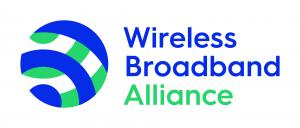Wireless Broadband Alliance L4S Implementation Guide Drives Business Benefits of Low Latency, Low Loss, Scalable Wi-Fi Networks
Significant latency reduction of over 90% in Wi-Fi networks achieved through L4S guidelines supporting next generation latency sensitive applications like gaming, AR & VR
Demand for L4S applications is growing, with both telecoms organisations and developers beginning to implement the technology. Apple, for example, provides guidance to developers on how to implement L4S in their apps, in 2024 Nokia and Vodafone conducted the first trial of L4S3 over an end-to-end Passive Optical Network (PON), reducing latency from 550 milliseconds to 12 milliseconds, demonstrating its suitability for real-time applications, and Comcast recently announced deployment of L4S technology, which will be rolling out across its entire footprint. (https://corporate.comcast.com/stories/latency-speed-explainer)
Business impact of L4S
Buffering is a primary source of delay in both wired and wireless networks, occurring when incoming packets exceed the departure rate, leading to high buffer occupancy. Latency in Wi-Fi networks is largely influenced by two factors: delays associated with queuing and buffering under load, and delays introduced by the 802.11 Media Access Control (MAC) protocol.
The adoption of L4S technology is set to revolutionize Wi-Fi performance, particularly for applications that demand low latency and high throughput. To address these issues, the L4S project aims to minimize buffering delays, reduce data loss, and enable scalable throughput. This will enable several business benefits for vendors, enterprises and customers:
• Supporting Next-Gen Applications – The technology enables enterprises and service providers to meet the growing demand for high-bandwidth, low-latency services, and enhance operational efficiency for modern, high-performance applications.
• Enhanced Customer Satisfaction and Revenue Potential - Industries such as gaming, media streaming, and telemedicine will achieve superior network performance, boosting customer retention and unlocking new revenue opportunities.
• WBA’s Industry Leadership – The WBA is fostering collaboration across the industry, driving the adoption of L4S technology, and positioning Wi-Fi as a critical enabler for emerging applications.
L4S technology enables vendors and enterprises to achieve new business benefits and success with their applications through four key technical benefits, all of which are discussed in more detail within the implementation guide.
• Revolutionizing Wi-Fi Performance - L4S tackles latency and congestion issues, offering groundbreaking solutions for applications like cloud gaming, AR/VR, and video conferencing.
• Significant Reduction in Latency - Utilizing Explicit Congestion Notification (ECN) in IP headers and Active Queue Management (AQM), L4S significantly reduces average and tail buffering delays by more than 90% , enhancing real-time application performance. Note: Latency reduction from 200 msec to 13 msec has been measured in field tests. (Reference, Section 5.1 Stationary STA test in the report)
• Improved Throughput and Stability – L4S provides smoother and more stable throughput, minimizing network congestion and packet loss for consistent high-performance connectivity. Stable throughput also enables more efficient packet scheduling techniques to be used for optimizing Wi-Fi network performance.
• Future-Proofing Wi-Fi Networks – Through the WBAs development and standardization of L4S technology, Wi-Fi networks are prepared to handle future challenges, ensuring long-term performance and scalability.
The L4S Implementation Guidelines
The WBA has developed the L4S Implementation Guidelines to assist industry stakeholders in implementing L4S technology, the guidelines cover:
• An overview of L4S technology, what it is and how it works
• Why support for L4S in Wi-Fi equipment is critical for end-to-end application performance
• How Wi-Fi equipment suppliers can implement L4S support in their products
• Simulation and test results that illustrate the benefit of L4S
• Initial results on optimizing Enhanced Distributed Channel Access (EDCA) parameters.
In 2025, the WBA will continue advancing L4S in coordination with QoS Management initiatives, including additional trials, report generation, provider surveys, and evolving L4S testing scenarios.
Tiago Rodrigues, President and CEO of the Wireless Broadband Alliance, said: “As L4S technology continues to evolve and gain traction, it will play a pivotal role in shaping the future of Wi-Fi networks, ensuring they meet the demands of modern, latency-sensitive applications. The L4S Implementation Guide will help vendors and enterprises to achieve maximum business impact from the technology and improve customer experiences for latency sensitive applications such as gaming and virtual reality.”
Download the “L4S Implementation Guidelines” to learn about L4S support in Wi-Fi, implementation approaches, and review simulation studies of L4S access point performance. (https://wballiance.com/implementation-guidelines-for-l4s/)
About the Wireless Broadband Alliance
Wireless Broadband Alliance (WBA) is the global organization that connects people with the latest Wi-Fi initiatives. Founded in 2003, the vision of the WBA is to drive seamless, interoperable service experiences via Wi-Fi within the global wireless ecosystem. WBA’s mission is to enable collaboration between service providers, technology companies, cities, regulators and organizations to achieve that vision.
WBA undertakes programs and activities to address business and technical challenges, while exploring opportunities for its member companies. These initiatives encompass standards development, industry guidelines, trials, certification, and advocacy. Its key programs include NextGen Wi-Fi, OpenRoaming, 5G, IoT, Smart Cities, Testing & Interoperability and Policy & Regulatory Affairs, with Member-led Work Groups dedicated to resolving standards and technical issues to promote end-to-end services and accelerate business opportunities.
Membership in the WBA includes major operators, service providers, enterprises, hardware and software vendors, and other prominent companies that support the ecosystems from around the world. The WBA Board comprises influential organizations such as Airties, AT&T, Boingo Wireless, Boldyn Networks Broadcom, BT, Charter Communications, Cisco Systems, Comcast, HFCL, Intel, Reliance Jio, Telecom Deutschland and Turk Telekom.
Follow Wireless Broadband Alliance:
www.twitter.com/wballiance
www.facebook.com/WirelessBroadbandAlliance
www.linkedin.com/company/2919934/
Wireless Broadband Alliance PR team
GingerPR Ltd
+44 1932 485300
email us here
Visit us on social media:
Facebook
X
LinkedIn
1 https://www.wballiance.com/
2 https://wballiance.com/implementation-guidelines-for-l4s/
3 https://www.nokia.com/about-us/news/releases/2024/04/03/nokia-and-vodafone-conduct-worlds-first-trial-of-l4s-technology-over-an-end-to-end-pon-network/



